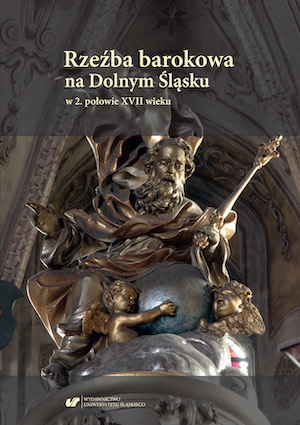Lubiąż i Świdnica – dwie koncepcje barokizacji śląskich wnętrz sakralnych w 2. połowie XVII wieku
Lubiąż and Świdnica – two concepts of baroquisation of Silesian church interiors in the second half of the 17th century
Author(s): Paweł Migasiewicz
Subject(s): Fine Arts / Performing Arts, Visual Arts, History of Art
Published by: Wydawnictwo Uniwersytetu Śląskiego
Summary/Abstract: Among the examples of baroquisation of church interiors in Silesia carried out or at least begun in the second half of the 17th century two stand out: the Cistercian Church in Lubiąż and the Jesuit Church in Świdnica. What they have in common is not just substantial scale, high artistic quality and use of numerous solutions previously unknown in Silesia, but, above all, French inspirations, which were rare in Habsburg lands in the 17th century and which reached Silesia via different routes.
The furnishings of the Lubiąż church, preserved on site until the Second World War, was made in several stages, from the end of the tenure of Abbot Arnold Freiberger (1636–1672), through, largely, the tenure of Abbot Johannes Reich (1672–1691) and his successors in the 1690s and at the beginning of the following century. Initially, the main artist in charge of the project was Matthäus Knote, followed by Matthias Steinl – a designer and head of the workshop that produced most of the furnishings. Despite many novel solutions making the Lubiąż furnishings original and in some elements even “avant-garde” in stylistic terms, the very concept of baroquisation of the Lubiąż church is, as a whole, traditional. Although the furnishings do make up a regular, symmetrical composition, each of these “pieces of furniture” is an autonomous unit. By comparison, the other baroquisation, in the Jesuit Church, appears unique. It was carried out according to a design by the order’s sculptor Johann Riedel, who reached France during his study travel and learned many solutions used in that country. He came up with a concept according to which uniform furnishings for a vast majority of the interior were made in the 1690s and the first two decades of the following century. Unlike those of Lubiąż, the Świdnica furnishings draw on groundbreaking French solutions, which Riedel got to know in person, of the so-called décor extensif – with the main altar being linked to side altars by means of panelling, making up an extensive structure encompassing and organising the interior and giving it a Baroque character. This novel solution in Central Europe remained the only one of its kind in Silesia and was not imitated.
Book: Rzeźba barokowa na Dolnym Śląsku w 2. połowie XVII wieku
- Page Range: 93-107
- Page Count: 16
- Publication Year: 2020
- Language: Polish
- Content File-PDF

